This step by step woodworking project is about 10×20 run in shed plans. This is a post frame built run in shed with two separate stalls and a lean to roof. The shed features large openings so you can have an easy access inside. You can use the shed for horses or for storing firewood or farm equipment. My plans come with step by step instructions and you can easily adjust all the dimensions to suit your needs. See my other DIY projects HERE. See all my shed plans HERE.
We recommend you to invest in the best materials you could afford. Therefore, you should buy weather-resistant lumber, such as pressure treated pine. Always take accurate measurements before adjusting the size of the components at the proper size. Drill pilot holes trough the components before inserting the wood screws, to prevent the wood from splitting. See all my Premium Plans HERE.
Made from this plan
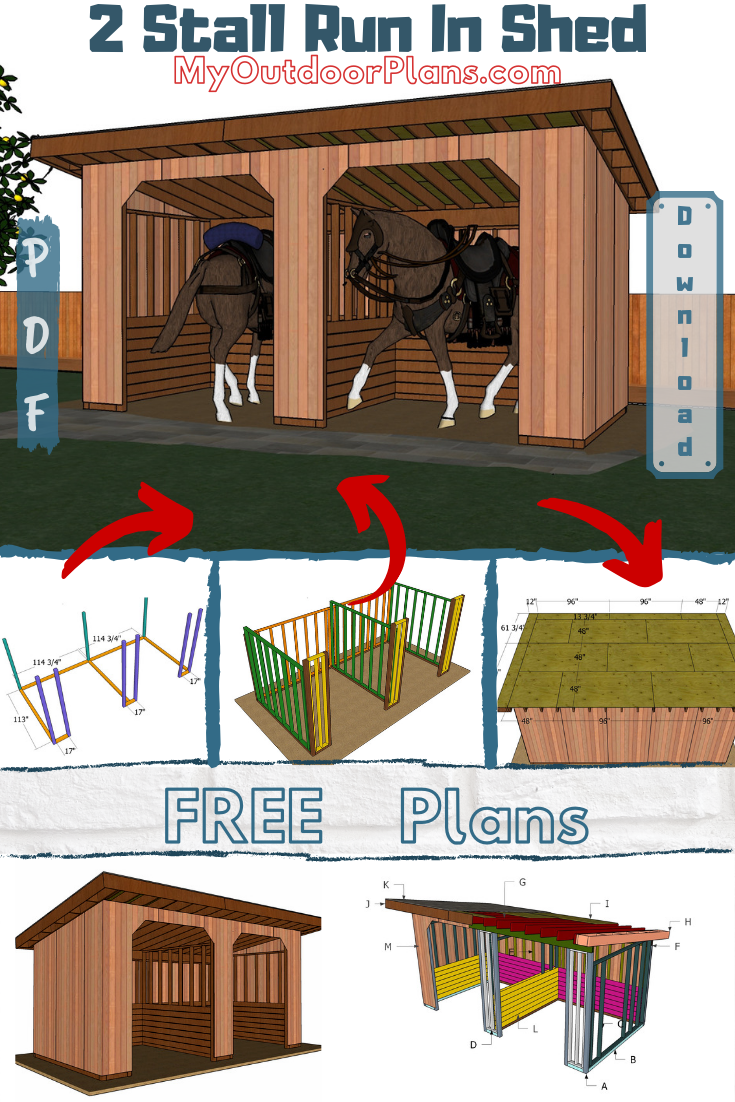
2 Stall Run In Shed – Free DIY Plans

Building a 2 stall run in shed
Materials
- A – 6 pieces of 4×4 lumber – 113″ long, 3 pieces – 93″ long POSTS
- B – 2 pieces of 4×4 lumber – 114 3/4″ long, 3 pieces – 113″ long, 3 pieces – 17″ long SKIDS
- C – 2 pieces of 2×4 lumber – 113″ long, 9 pieces – 96″ long 3xSIDE WALL
- D – 2 piece of 2×4 lumber – 17″ long, 3 pieces – 106 1/2″ long 3xFRONT WALL
- E – 2 pieces of 2×4 lumber – 114 3/4″ long, 9 pieces – 86 1/2″ long 2xBACK WALL
- F – 2 pieces of 2×10 lumber – 120″ long, 1 piece of 1/2″ plywood – 9 1/4″x96″ long, 1 piece – 9 1/4″x24″ long 4xHEADER
- M – 5 pieces of 5/8″ T1-11 – 48″x96″ long, 3 pieces – 48″x119″ long, 2 pieces – 10″x48″ long SIDING
- 1 piece of 1/2″ plywood – 4’x8′
- 6 pieces of 5/8″ T1-11 – 4’x8′
- 3 pieces of 5/8″ T1-11 – 4’x10′
- 11 pieces of 4×4 lumber – 10 ft
- 4 pieces of 4×4 lumber – 8 ft
- 19 pieces of 2×4 lumber – 10 ft
- 46 pieces of 2×4 lumber – 8 ft
- 8 pieces of 2×10 lumber – 10 ft
- post anchors
- post to beam connectors
- 2 1/2″ screws, 3 1/2″ screws
- tube form
- concrete
- construction glue
- 1 1/2″ structural screws
- wood filler , wood glue, stain/paint
Tools
- Safety gloves, glasses
- Miter saw, jigsaw
- Chalk line, tape measure, spirit level, carpentry pencil
- Drill machinery and drill bits
Time
- One Day
Building a 12×16 run in shed
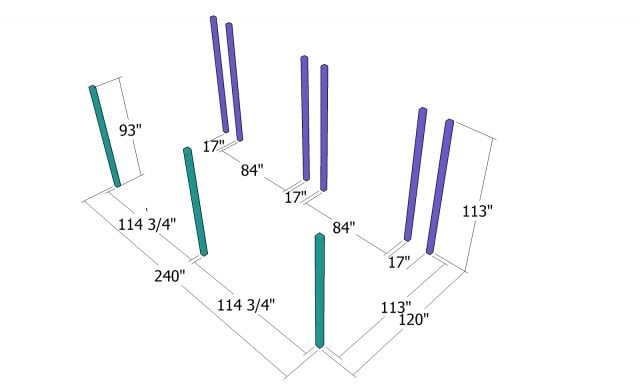
Posts for run in shed
The first step of the project is to layout the posts for the run in shed. Therefore, you need to use batter boards and string to layout the location of the post. Measure the diagonals and apply the 3-4-5 rule to the corners. Use spray paint to mark the location for the posts. Select the location for the shed and remove the vegetation layer. Level the surface thoroughly.

Setting the posts
After marking the location of the posts, you need to dig 3′ deep holes in the ground, using a post hole digger. Install tube forms and fit the posts into place, making sure they are perfectly plumb. Fill the forms with concrete and install the anchors. Use string and batter boards to align the anchors.
Please read the local codes so you determine the RIGHT depth for the footings. In addition, in some areas you might need to set the posts to concrete. That is why it’s essential to read the local codes, because the front line depth differs according to your location.

Fitting the base skids
Assemble the base for the shed, as shown in the diagram. Make sure the corners are square and measure the diagonals, so they are perfectly equal. Drill pocket holes at both ends of the skids and insert 3 1/2″ screws to assemble the base for the shed.
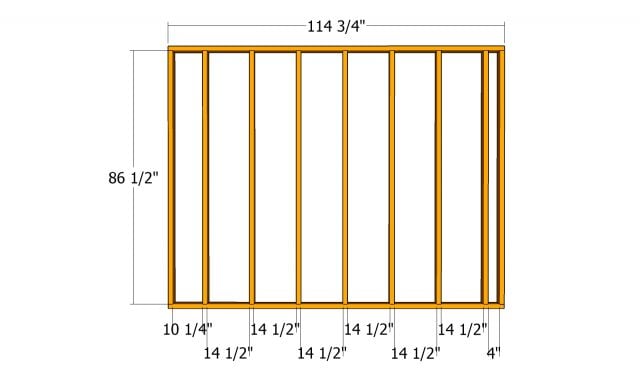
Back wall frames – 10×20 shed
Assemble the back wall frame for the run in shed. As you can see in the free plans, you have to assemble the back wall from 2×4 lumber. Cut the components with a saw, then drill pilot holes through the plates. Insert 3 1/2″ screws to secure the studs to the plates. Fit the 2×4 studs every 16″ on center and make sure the corners are perfectly square. You need to build two identical frames for the back wall.

Side wall frames – 10×20 run in shed
Next, frame the side walls for the run in shed. Drill the pilot holes through the plates and insert 3 1/2″ screws to lock everything together tightly. We need 3 identical frames, two for the sides and one for the middle partition.
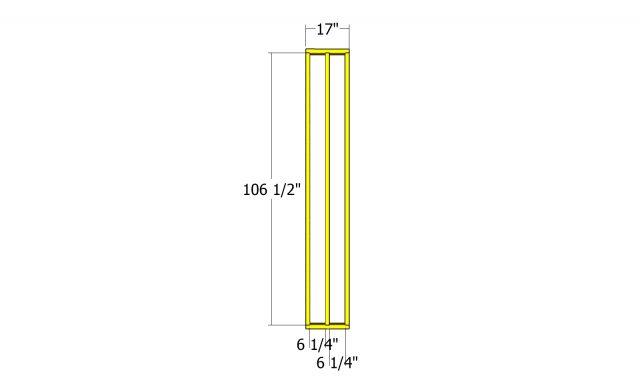
Front wall frames – 10×20 run in shed
Assemble the wall frames for the front of the run in shed. Cut everything from 2x4s, as shown in the diagram. Drill pilot holes through the plates and insert 3 1/2″ screws into the studs.

Assembling the frame of the run in shed
Fit the wall frames to the base of the shed. Plumb the wall frames and drill pilot holes through the bottom plates. Align the edges flush. Insert 3 1/2″ screws to lock them to the skids. Secure the frames to the posts with 3 1/2″ screws. Check if the corners are square.
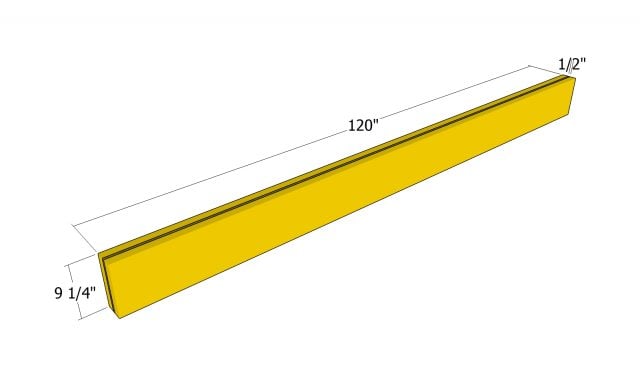
Headers
Use 2×10 lumber for the headers. As the actual thickness of 2x10s is 1 1/2″, we need to fit a piece of 1/2″ plywood between them to get an added thickness of 3 1/2″. Add construction glue to the joints and insert 2 1/2″ screws from both sides. Align the edges flush.
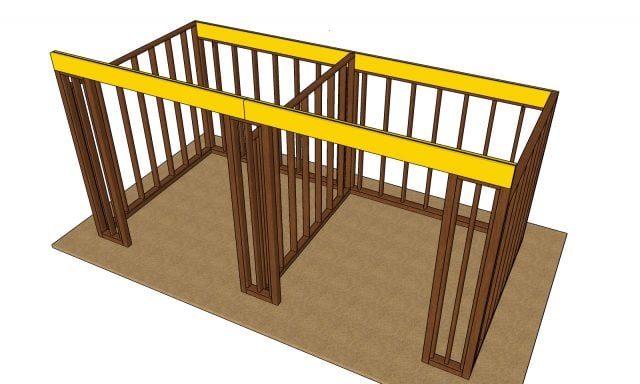
Fitting the headers
After assembling the headers, you need to attach them to the front and back of the run in shed. Fit the header to the top of the posts, using post to beam connectors.

Front wall siding sheets
Use T1-11 siding sheets for the exterior of the shed walls. This is the most straight forward approach, but you can use 1×6 boards, as well. Make the cuts around the front openings. Align the edges flush and insert 6d nails, every 8″ along the shed framing. Leave no gaps between the panels for a professional result.
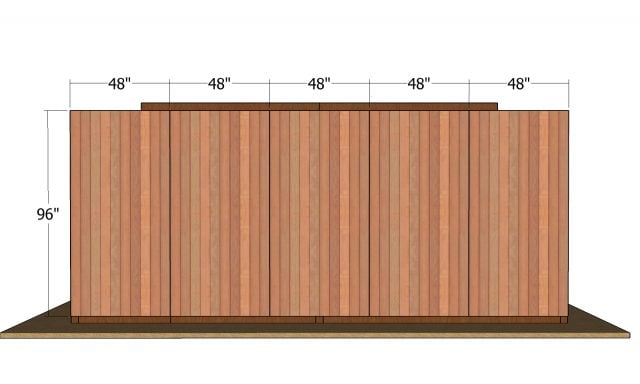
Back wall siding sheets – run in shed
Attach the T1-11 siding sheets to the back of the shed.

10×20 run in shed plans – back view
This run in shed features two separate stalls, making it ideal for a multitude of uses. This is a post frame built shed but it also features wall framing and a sturdy lean to roof. You have two large openings to the front for an easy access inside. You can use the run in shed for horses or for other farm related purposes.
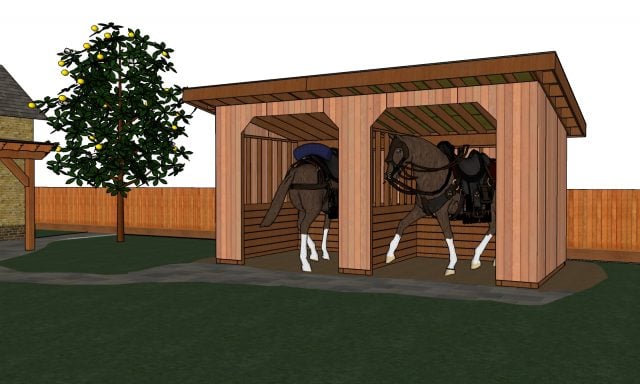
2 Stall Run in Shed Plans
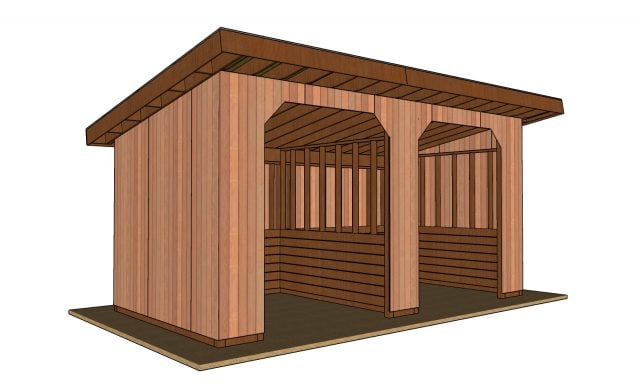
How to build a 2 stall run in shed
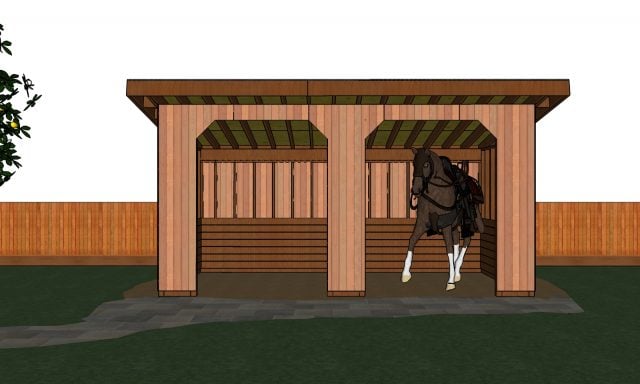
How to build a run in shed for 2 horses
If you want build this run in shed you should check out PART 2 of the project, where I show you how to frame the roof. If you are here, you might as well take a look over my 12×16 run in shed. If you like my project, don’t forget to SHARE it on Facebook and Pinterest.
If you want to download the plans. just click on the GET PDF PLANS button bellow.
Thank you for reading our project about free 10×20 run in shed plans and I recommend you to check out the rest of the projects. Don’t forget to LIKE and SHARE our projects with your friends, by using the social media widgets. SUBSCRIBE to be the first that gets our latest projects.
<< Previous | Next >>

